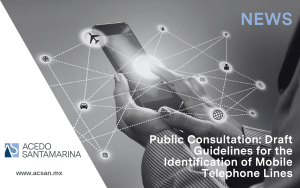
There is no doubt that we are living in one of the most technologically and scientifically advanced stages in the world. We have gone from formal, written communication – which involved stamps, post offices, envelopes and paper – to simply picking up our phone and being able to contact anyone around the world.
It is true that those who do not adapt to these technological changes run the risk of becoming socially maladapted entities. This is the case of the Mexican legal system, since in order to carry out some matters they continue to opt for solutions that today are considered outdated.[1] In spite of this, the judiciary of the federation and of each state have been slowly adapting to the Internet and technology. For example, in some states of the Republic, we are beginning to know about online trials such as Nuevo León or the Federal Court of Administrative Justice, which allows us to promote writs through their web pages.[2][3]
However, there is still a long way to go, so that individuals and lawyers have no choice but to adapt to a system that is clearly outdated in relation to the current needs of society. To be more specific, at this point I refer to letters rogatory proceedings which, in general, are acts that need to be communicated between judges of different countries, which turns out to be extremely complicated due to the time it takes (approximately six months); time in which, by the way, the original proceeding has to be suspended.
According to the SRE, a letter rogatory is “the legal figure by means of which a jurisdictional authority of a State requests a foreign jurisdictional authority to assist in the performance of acts of mere formality that are necessary for the processing of a lawsuit”[4].
The procedure for the execution of a letter rogatory is set forth in the Inter-American Convention on Letters Rogatory and is relatively simple from the formal point of view; however, the bureaucratic issue at the Ministry of Foreign Affairs is what causes the time to extend sometimes up to six months or more, just to be able to make available to the Superior Court of Justice the documentation for the action.
The foregoing is unacceptable, since it directly violates the fundamental right enshrined in Article 17 of the Political Constitution of the United Mexican States, since it speaks of the prompt and expeditious delivery of justice, which cannot be guaranteed by this central authority.
This is how the need to create a new means of communication arises, since as we have seen, not only is access to justice in a prompt manner violated, but also one of the principles of this same article, since in the event that the parties want to have prompt access to justice, they will have to pay for the diligence of these documents, as stated in Article 12 of the Inter-American Convention on Letters Rogatory, with the uncertainty of whether the judicial body to which the letter is required may reject the letter outright.
Under this precept, we feel the need to digitalize this means of communication as soon as possible. I say as soon as possible because, according to the General Directorate of Legal Affairs of the Ministry of Foreign Affairs, from 2000 to 2008 alone, foreign authorities requested the support of 3,210 letters, with an average of 401.24 letters per year.[5] On the other hand, Mexico requested international cooperation for the diligence of 7158 letters in the same period, with an average of 894.75 letters per year.[6] The Mexican authorities requested the support of the Ministry of Foreign Affairs for the diligence of 7158 letters in the same period, with an average of 894.75 letters per year.[7] The Mexican authorities requested the support of 3,210 letters per year, with an average of 401.24 letters per year.
The answer lies in an amendment to Article 551 of the Federal Code of Civil Procedures which opens the possibility of a completely new procedure for a much shorter procedure than the one currently established by the Ministry of Foreign Affairs. In addition to the above, the reform should include the use and updating of the digital systems of each Superior Court of Justice of the different entities of the country, as well as of the Mexican embassies only in the countries that are part of the Convention. This would allow any requesting country to approach the embassy and fill out a form to be immediately sent to the Superior Court that the authority has indicated as its domicile. At the moment of receiving it, the Court would have a term of no more than 3 days in accordance with the same civil procedural order to turn it over to the judicial body it considers competent.
Only with this solution could we meet the needs that a technological society demands, as well as guarantee the prompt and expeditious delivery of justice. On the other hand, the Federal Government, through the General Directorate of Legal Affairs of the Ministry of Foreign Affairs, could save resources, optimize time and get rid of the enormous amounts of paper that can represent a danger to the buildings and that also implies a possible violation of the parties’ information.
[1] https://archivos.juridicas.unam.mx/www/bjv/libros/5/2199/7.pdf
[2] https://www.pjenl.gob.mx/
[3]https://www.juicioenlinea.gob.mx/portalexterno/faces/pages/seguridad/login2.jspx?_afrLoop=779464406408619&_afrWindowMode=0&_adf.ctrl-state=a4p0x361m_4
[4] https://www.gob.mx/sre/acciones-y-programas/exhorto-o-carta-rogatoria-internacional-36633
[5] https://poderjudicial-gto.gob.mx/pdfs/C12.pdf
[6] IDEM





